Last-Minute NYC Holiday Gift Guide 🎁
We’ve created a holiday gift guide with presents for the intrepid New Yorker that should arrive just in time—


James and Karla Murray are the photographers and authors of the fantastic books about New York City’s unique disappearing storefronts, aptly titled Store Front and Store Front II. They also run a fun blog that covers spots in their books and their own explorations. They recently reached out to us to share their their exploration of the abandoned Port Morris line train tracks, taken over the course of more than a decade, in the Bronx, built in 1842. Up until the late 2000s, the rail corridor was nicknamed the “Mott Haven Swamp,” due to the huge amount of stagnant water that had accumulated. In December 2009, the Department of Environmental Protection removed 625,000 gallons of water from a one-mile section, as well as “45 tons of soggy junk,” reported The New York Times. In recent times, there’s been talk about converting this into a “Lowline park” to combat the homeless camps and drug users that populate it.
In 2009, the city made engineering adjustments to the track bed which is why today you can (sort of) walk along it at your own risk. Below, you’ll see the Murrays’ photographs and captions showing their walk through the rail line before and after the corridor was drained, beginning at Bruckner Boulevard going north. You’ll see graffiti murals from the late ’90s and early 2000s, fascinating infrastructure, homeless encampments, and more.
A “Derail” sign. The train line used to connect to what is now The CSX Oak Point Yard:
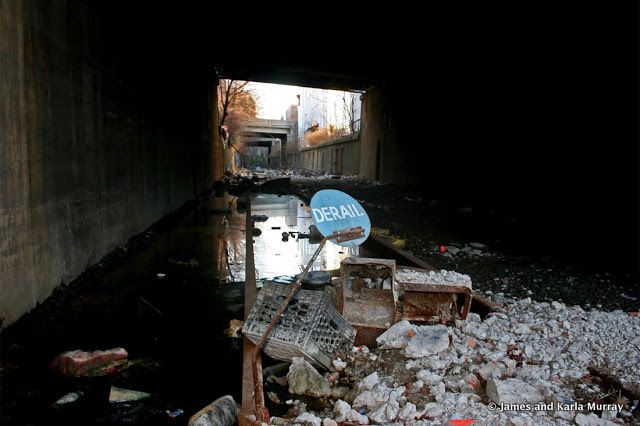
The old Ward’s Bread factory smoke stack. The stack has since been torn down. The photo is also before the line became mostly flooded.
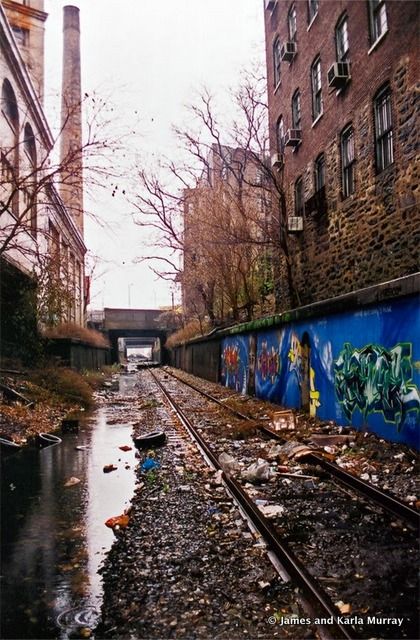
A detail of the graffiti pieces from the previous photo. Includes work by the twins HOW & NOSM member’s of The Bronx’s famous TATS CRU and the artist POPOF. The wall was painted for Mother’s Day 2000:

Looking north toward the Wales and Concord Avenue overpasses. This autumn photo shows the cut fully flooded:
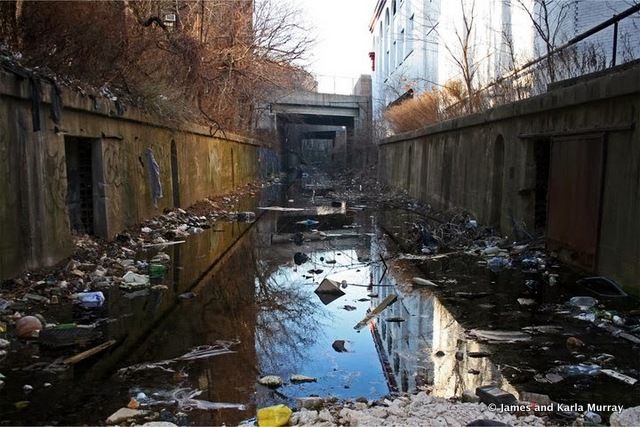
Same location as the previous photo, in the summer, but with many more insects and much more smell:
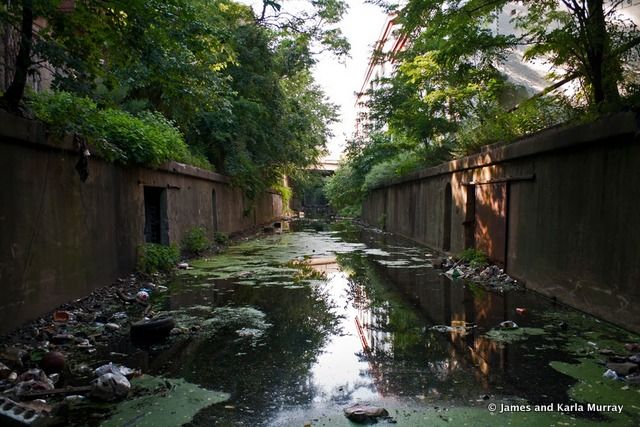
Each alcove has its own collection of discarded needles and condom wrappers:
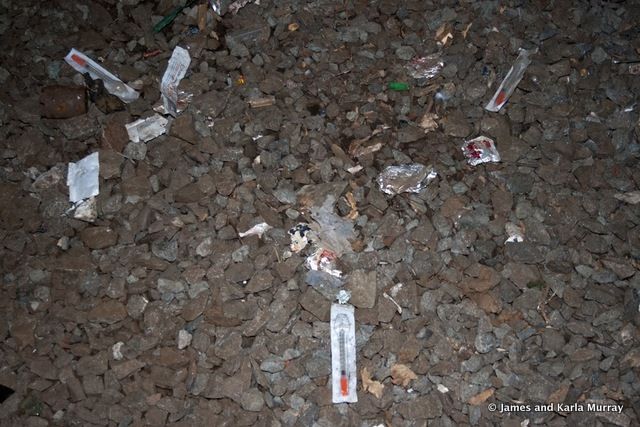
A 1997 graffiti wall shot in the winter. The ice makes it much easier to move around:
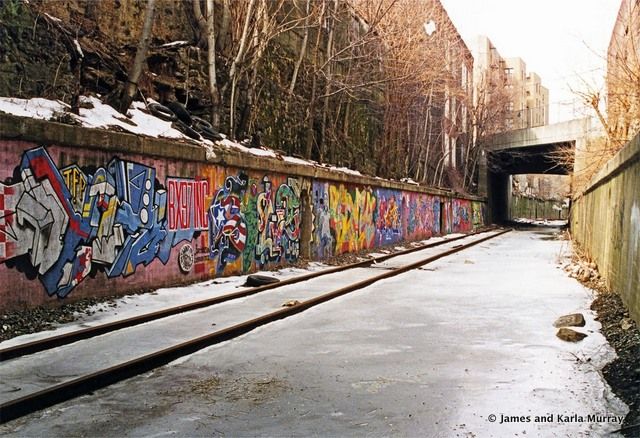
Clockwise from top left, a piece by the dutch graffiti writer DELTA, a piece by the NYC legend SENTO TFP, the artist NEON’s piece, Australian graffiti writer ATOME refers to “Crack Town,” New York Legend DAZE’s piece, and graffiti artist STAK’s piece:
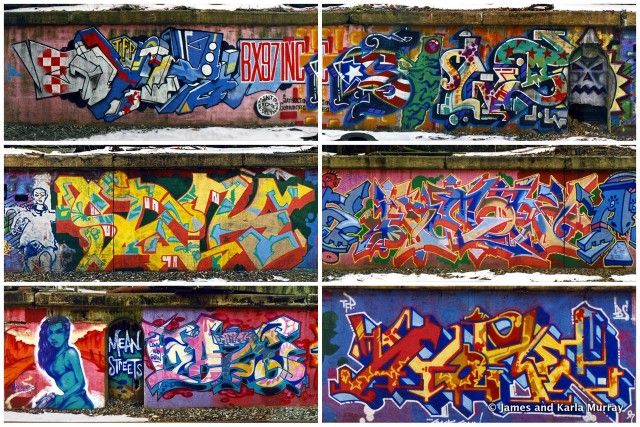
Under the Wales Avenue underpass. A narrow walkway along the left is mostly dry:
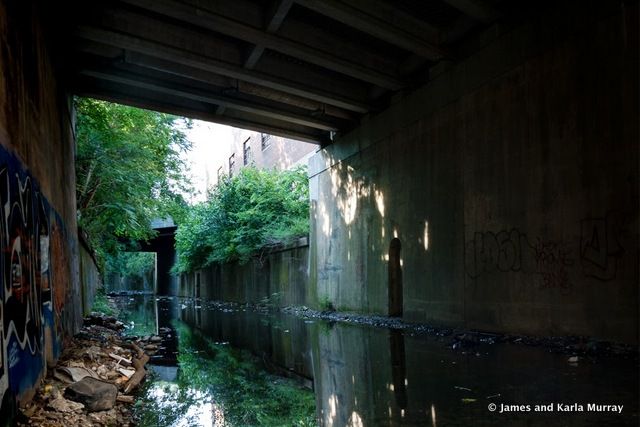
Clockwise from top left: Swedish graffiti artist BLUE, another piece in the cut by SENTO (with the words Crak Trax), a 1999 piece update by MILK, graffiti pieces by the writers ZEDZ and YALT.
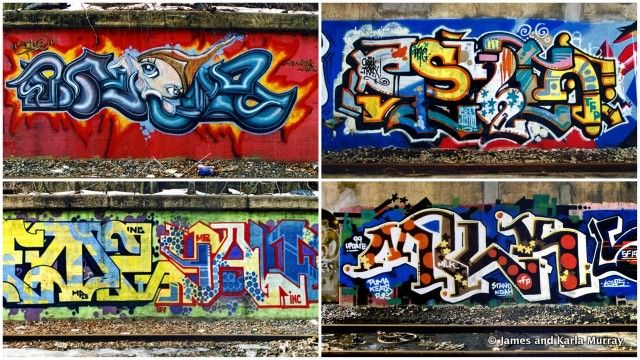
The entrance to the St. Mary’s Tunnel that runs under St. Mary’s Park… An engraving shows this older section of the tunnel was completed in 1905:

Trash. At one time a stairway (just visible in front of the right side of the tunnel entrance- click photo to enlarge) down to the track level was constructed out of shipping pallets, but it has since been dismantled:
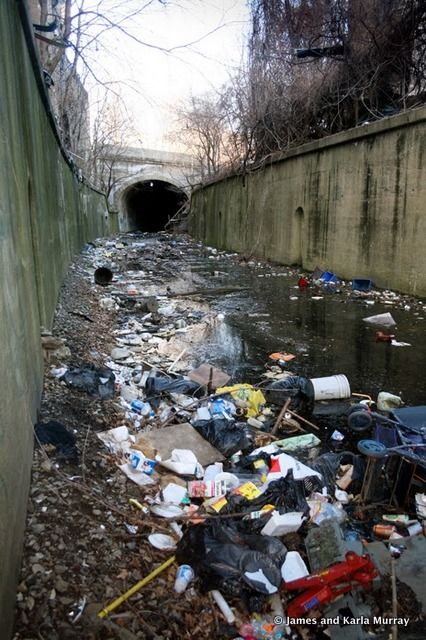
Photo of the same location shot in the winter. Another older photo showing the tracks:
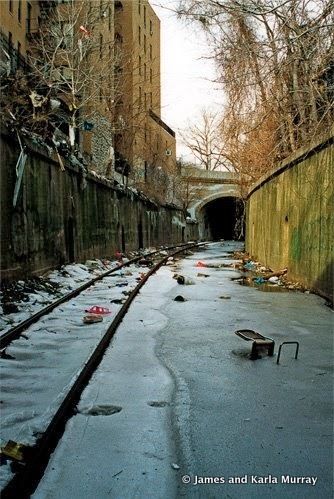
The tunnel’s ceiling vent. Pitch blackness, plenty of filthy water and still more discarded needles made kneeling to get this photo a challenge. The surrounding walls that fall in the occasional light of the vent are now covered with graffiti.
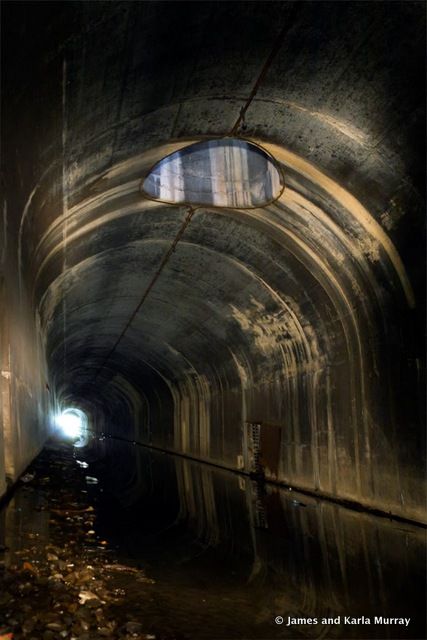
Looking back south, from where we came in:
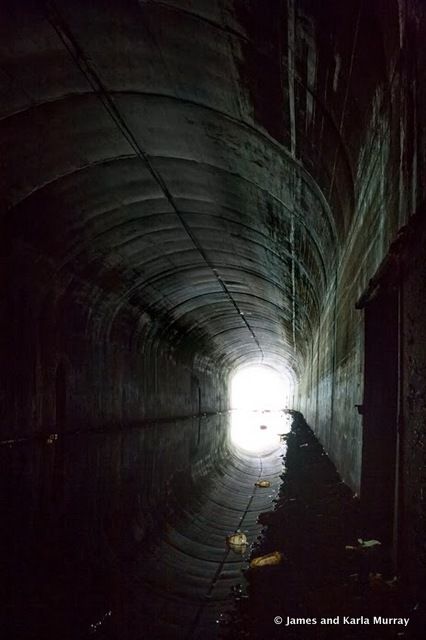
Looking north, ahead to the joint between the old tunnel and the newer covered section. It’s very dark:
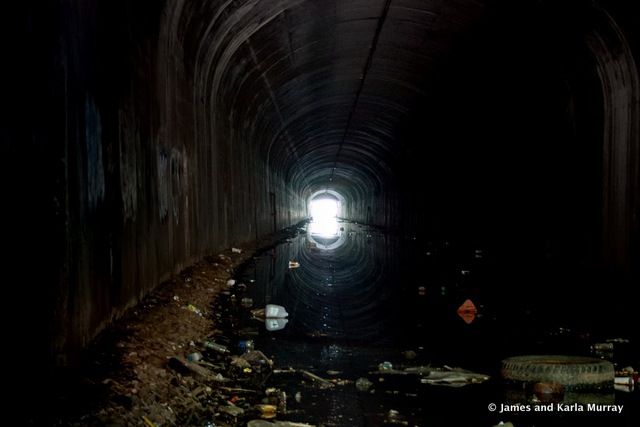
A ring of light from the vent highlights the old/new gap. If the water is disturbed, the smell greatly increases:
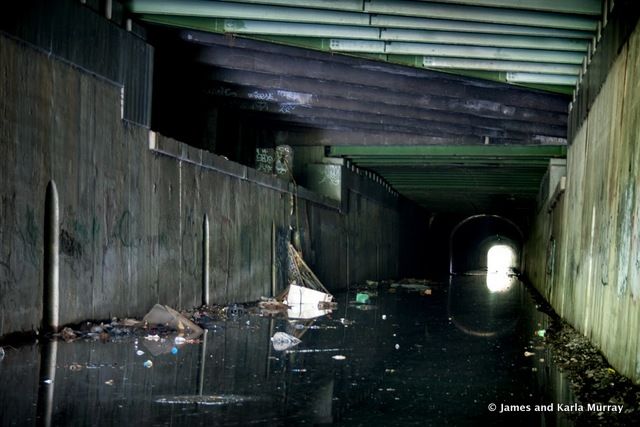
The rope ladder up to a crawl space. A man living near the tunnel said that a guy, “a big gorilla” lives up there and warned us to avoid him. He didn’t seem like a man who made jokes:
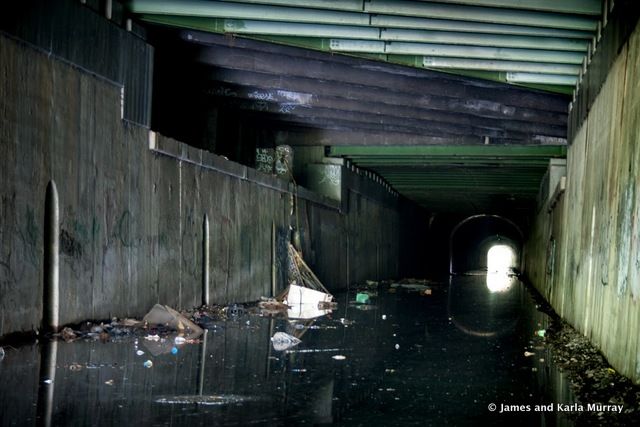
Looking north towards the end of this covered section. It’s still relatively cold in there:
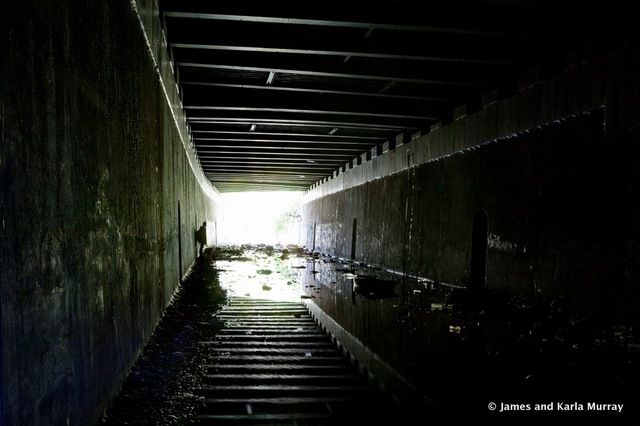
Looking south towards the end of the covered section:
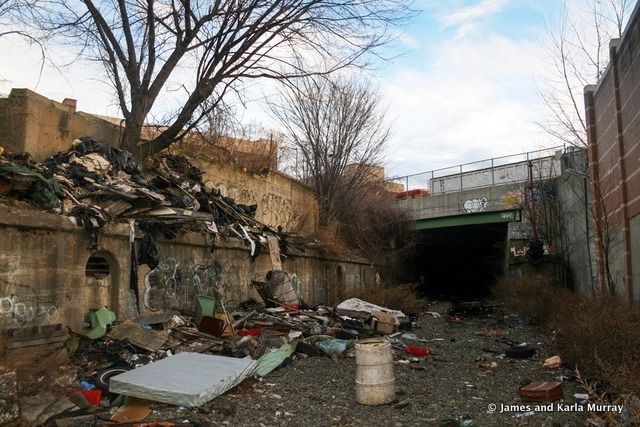
A series of track side homes. Tarps, scrap lumber and construction ruins provide the shelter:
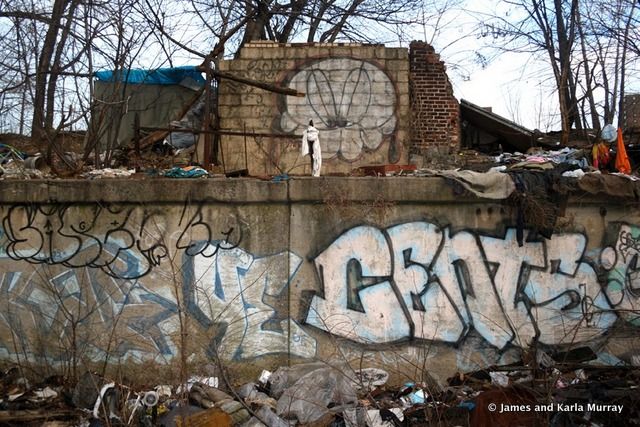
The 5 Train crosses over the tracks. Ladders and scaffolding sections provide access from the above streets:
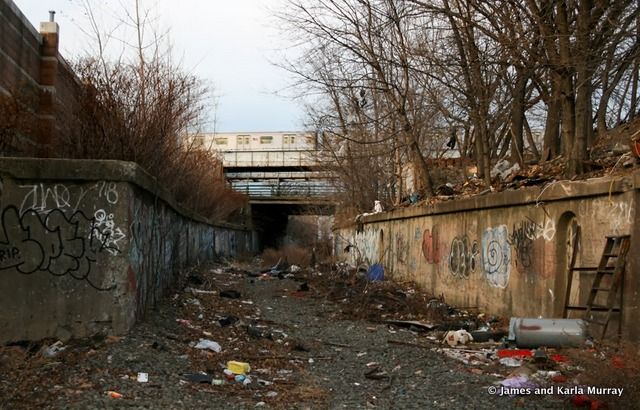
“Slave Power” graffiti. Artist unknown:
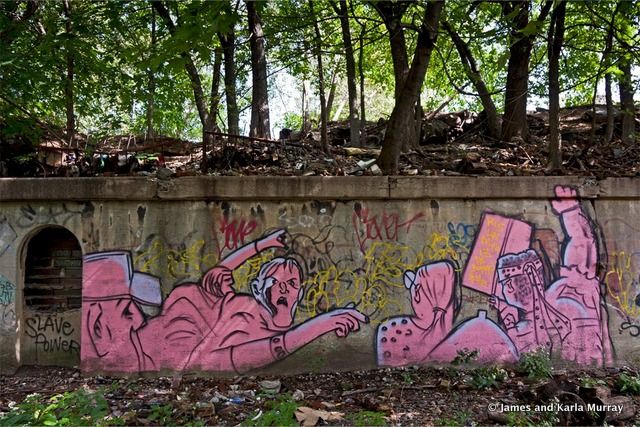
Graffiti character by NASH:
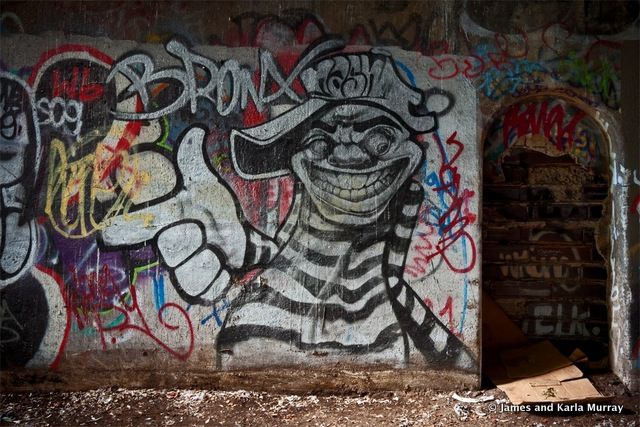
Looking south, back towards the tunnel from underneath Westchester.
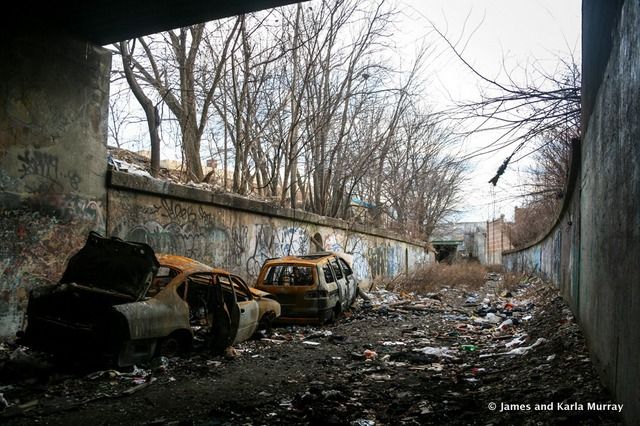
A man named Tanaka, living under Westchester Avenue:
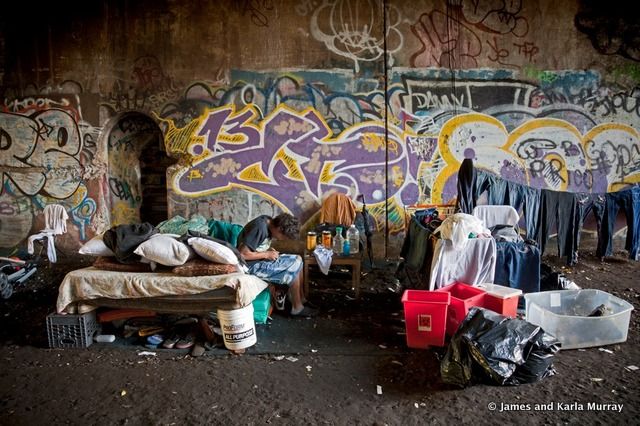
Leather seating surfaces. Looking north to the section that runs alongside a running track and, further along, through a baseball field:
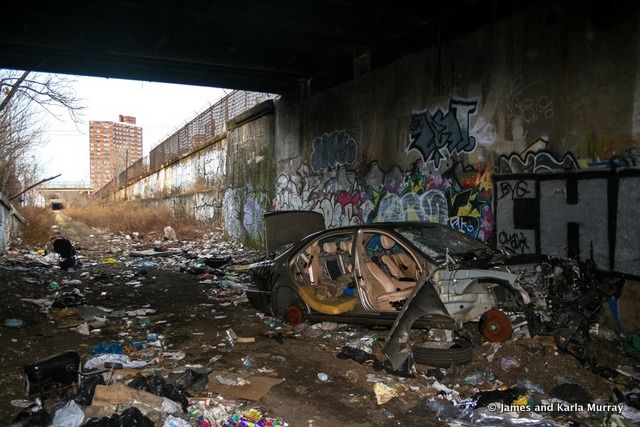
Someone’s home. A picture of a Ferrari with a small clock embedded in it is propped up nearby:
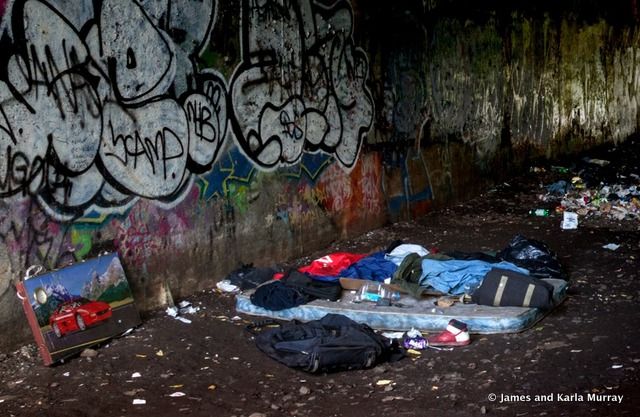
Looking south, back at Westchester Avenue… Cooking and shooting under the overpass:
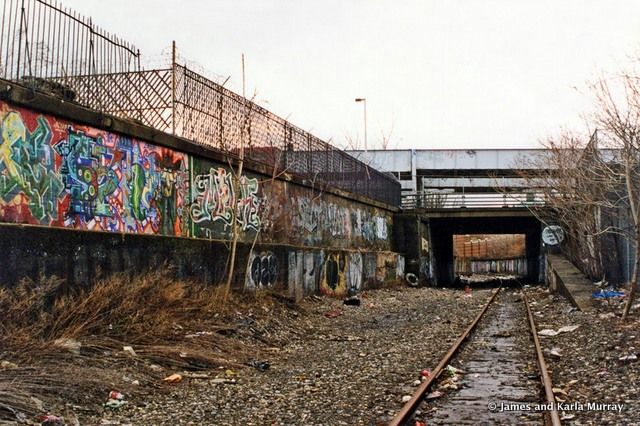
The three track-side pieces in detail. From left: ATOME, SENTO and MILK:

Stripped and burnt cars. Years ago construction workers told us that an old age home was going to be built in the field. Today, part of the field is a baseball diamond, the other areas show that construction is taking place. Last time we checked.
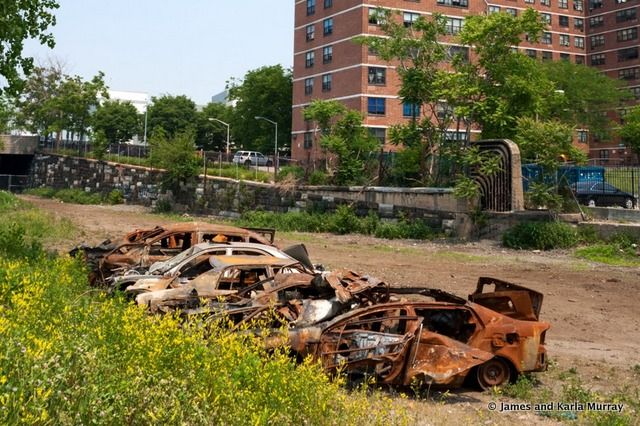
Near Brook Avenue, looking north. The northern stretch of the walk:
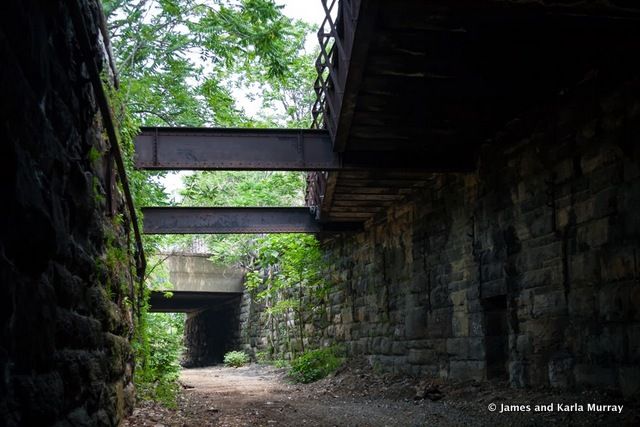
Looking south. When we last walked this section the tunnel had been dragged recently, removing bulk items of trash:
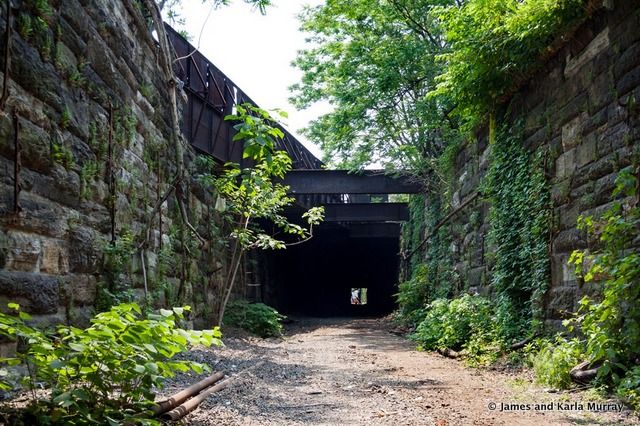
Under Third Avenue. Needles remain, despite the clean-up:
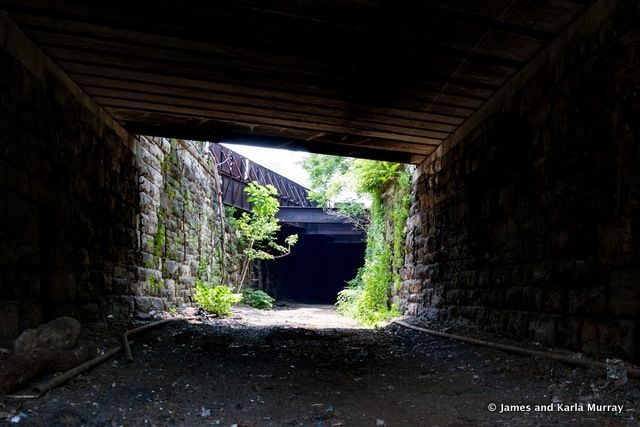
Brick and stone ruins, track-side, looking east:
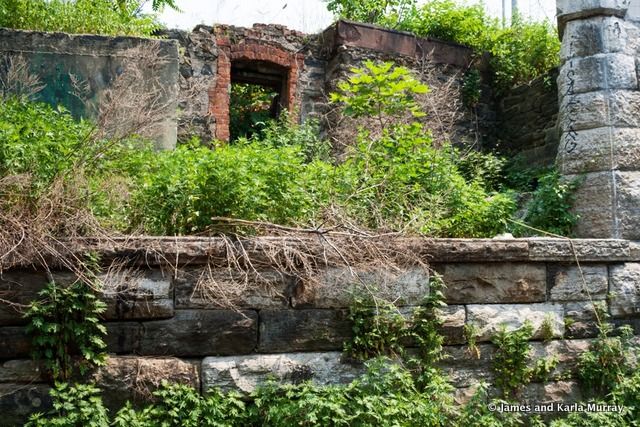
Metal coming off inside the cleaned tunnel:
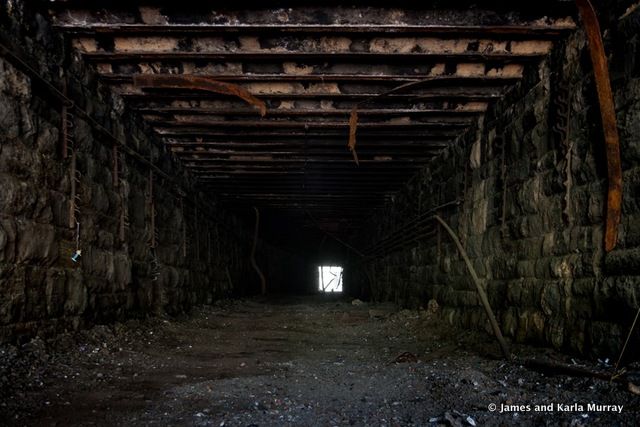
Looking south east:
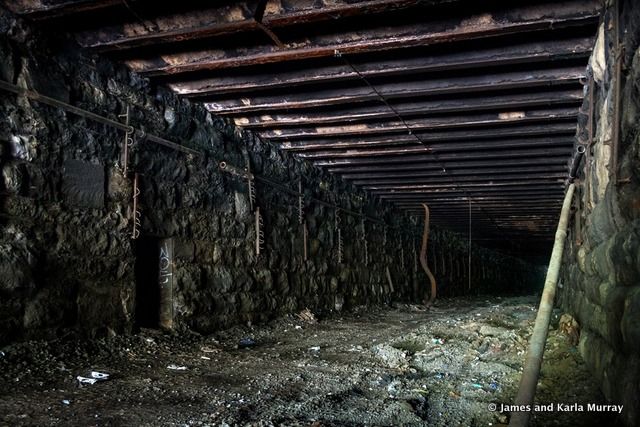
The Saint Peter and Paul Church, visible from the train line path. Torn down sections of fence litter the path:
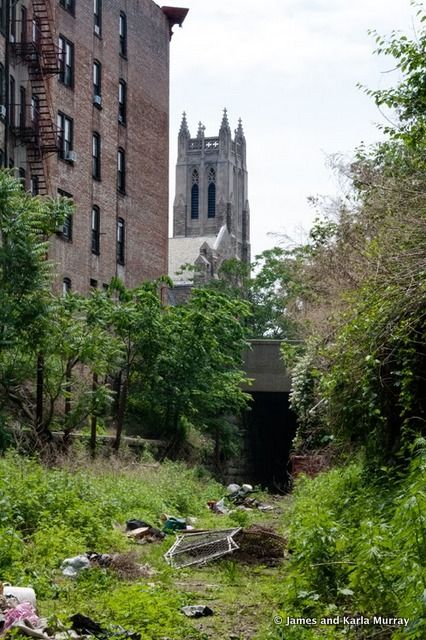
Newly constructed homes in the freshly cleaned tunnel. Possibly up as far north as Elton Avenue. We start the return walk south…
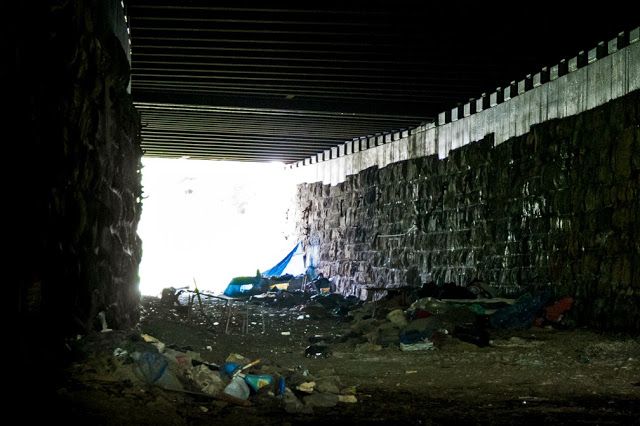
Photo by James and Karla Murray
Join James and Karla Murray, as they lead Untapped Cities readers on an upcoming STOREFRONT: A HISTORIC EAST VILLAGE FOOD TOUR, where you will learn about the diverse German, Italian, Jewish and Ukrainian history of the East Village and try some fresh homemade mozzarella, drink an authentic New York City egg cream or have a freshly roasted cup of coffee, taste a hot Ukrainian potato pierogi with toppings, sample a freshly baked Jewish sugar cookie, enjoy an authentic New York hot dog and tropical drink and taste a freshly baked cannoli. Enough food will be sampled so that for most people lunch afterwards is not needed. Get tickets here:
Historic East Village Food Tour
Next, check out 7 things to discover in Mott Haven in the Bronx.
Subscribe to our newsletter